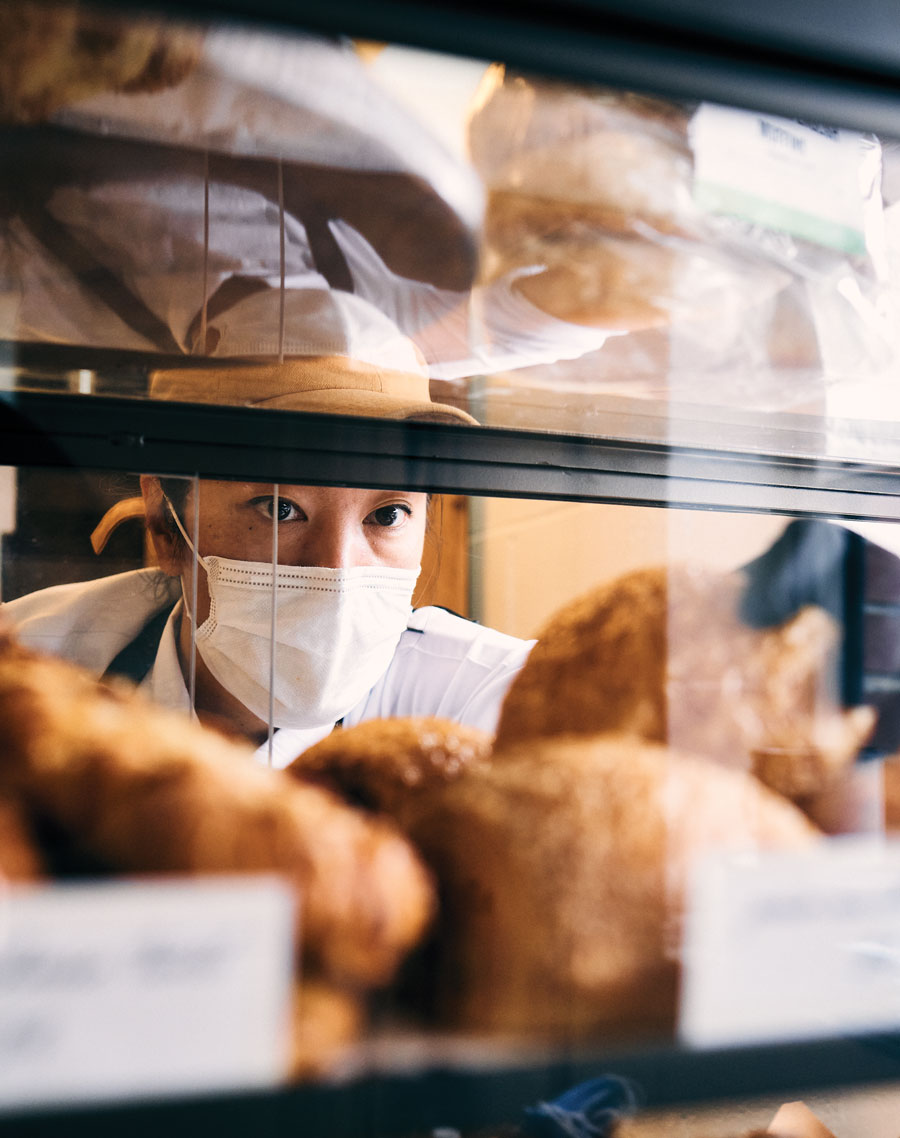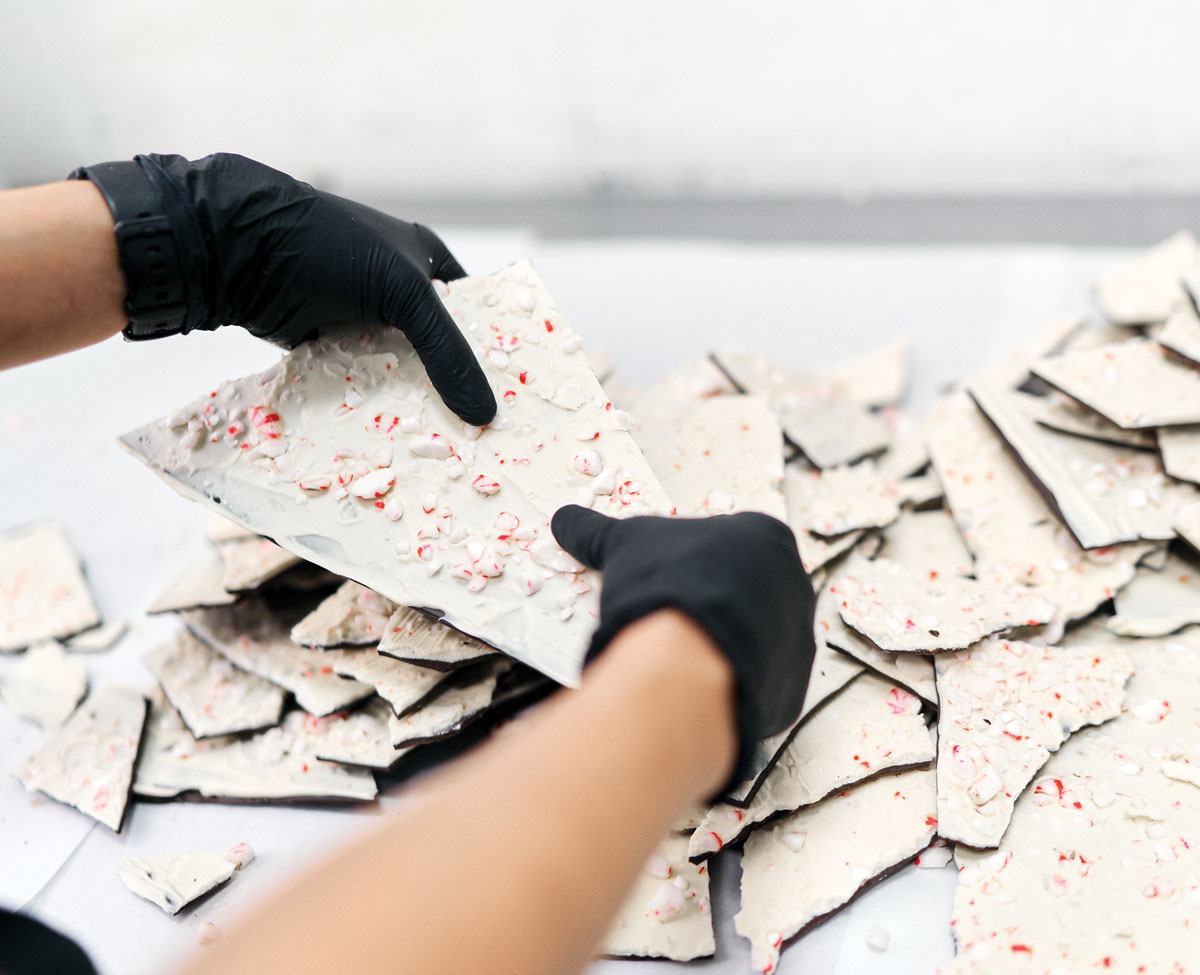
Photograph by Ben Rollins
It used to be that a meal at Chai Pani was incomplete without an order of the sev potato dahi puri. Puffed, purse-shaped flour crisps are filled with potatoes, onions, cilantro, and crispy chickpea noodles, then topped with yogurt and tamarind and green chutneys. Eating one is a little like popping a Gushers candy into your mouth, except that the crunchy exterior of an SPDP gives way to a cool and bracing burst of creamy spiciness followed by the warm and comforting, potato-y center. If you want one, though, you’ll have to wait a while: They’re currently off the menu at the Decatur mainstay. SPDP is best enjoyed freshly assembled, and Chai Pani only does takeout.
Chai Pani’s menu was tweaked when it reopened in June, following a weeks-long hiatus. Chef and co-owner Meherwan Irani says that he would have discontinued the kale pakora and okra fries, too, if he could have (they run the risk of losing their crispiness while being transported)—but demand for them is too high. “It’s a compromise,” Irani says, “knowing that the food’s not going to be experienced the way it’s meant to be experienced.”
The loss of that signature dish is just one example of how chefs have had to rethink their menus during the pandemic. It’s even trickier for restaurants that, unlike Chai Pani, didn’t do much, if any, takeout prior to March 2020. “How are you deciding what are the best dishes to offer, from being sure your guests are happy [to being sure] you’re passionate about the menu?” says Anthony Vipond, cofounder and general manager of Whiskey Bird in Morningside.
Whiskey Bird stopped offering its scotch eggs and Korean rice cakes, two of its most popular dishes, after the restaurant temporarily pivoted last year to takeout-only. Not only did the rice cakes not travel well, but they required ingredients that weren’t used in other dishes—and therefore became more of a hassle than the kitchen could justify. Dine-in service has resumed, but those two items aren’t back on the menu yet; Vipond and executive chef/cofounder Chad Crete instead have added a burger in the hopes of having broader appeal to new customers looking for more familiar food.

Photograph by Ben Rollins
Todd Richards opened his East Lake barbecue restaurant, Lake & Oak, in July and says he didn’t have to tweak his menu, conceived before the pandemic, too much. He did have to cull it, though, and now only offers about 80 percent of what he’d intended. “There are a lot of dishes that we wanted to do that we didn’t,” he says. While he hopes to offer barbecue tacos one day, he refuses to do them for his now takeout-centric operation because of how easily they fall apart or get cold while traveling.
Reimagining a menu to befit a pandemic sometimes means completely reimagining the restaurant itself. Instead of crafting a high-end tasting menu for the road (which really can get lost in translation), chef Ryan Smith of Staplehouse now offers charcuterie, composed dishes, smoked meats, pastries, and pantry items out of a space that’s been completely reconfigured as a market. Jarrett Stieber never intended to serve takeout, but he overhauled his Summerhill restaurant, Little Bear, as a takeout-only joint just a few weeks after he opened.
Jennifer Yee once oversaw a pastry program that made playful, intricately plated creations like frozen persimmon mousse with persimmon puree and bruleed persimmon on top. That was back when each restaurant in the Hopkins and Company group (C. Ellet’s, Holeman & Finch Public House, H&F Burger, Hop’s Chicken, and the now closed Restaurant Eugene) used to have its own on-site pastry team. Now, Yee focuses on simpler, comforting desserts that are made in a single location by her and her small team for all the Hopkins restaurants: “Because it’s all being produced in a centralized space, you have to think about transport”—either to the restaurant itself or to the takeout customer.

Photograph by Ben Rollins

Photograph by Ben Rollins

Photograph by Ben Rollins
The dessert menus at C. Ellet’s and H&F Burger haven’t really changed during the pandemic; they still offer sticky toffee pudding and fried hand pies, respectively. But now, Yee also supplies pastries, including croissants and cinnamon rolls, to the Buttery ATL, a hybrid online-pickup market. She misses her “a la minute” plated desserts but is eager to focus on making more pandemic-appropriate creations.
In addition to these new calculations that must factor in a dish’s viability and portability, chefs also have to make a psychological adjustment with their adapted menus: Without as much in-person interaction, it’s harder to know how well a dish works. “We don’t get to see the look on your faces when you eat the food at home,” Irani says. “That’s really hard.”
This article appears in our February 2020 issue.













